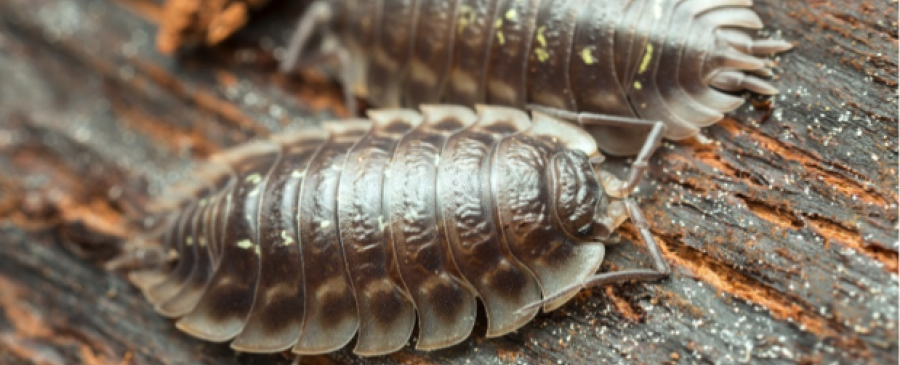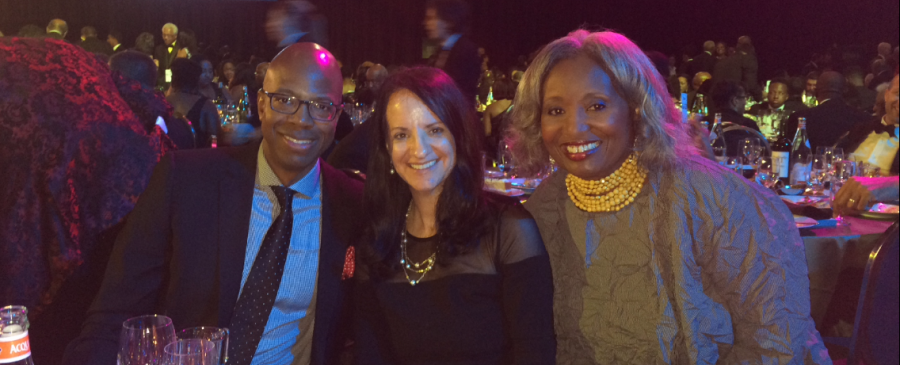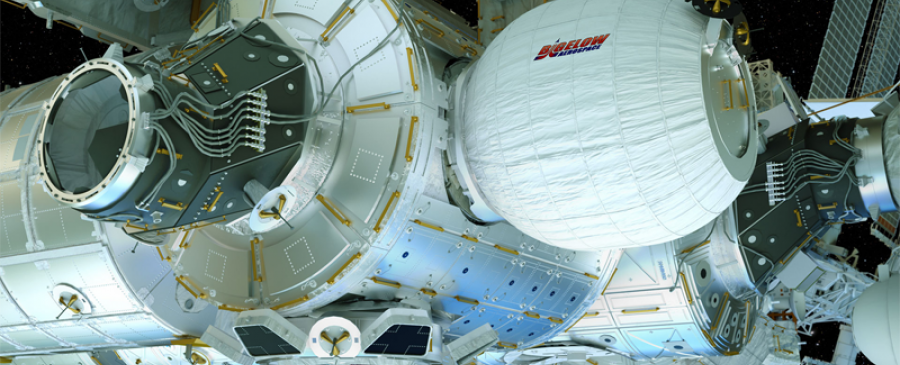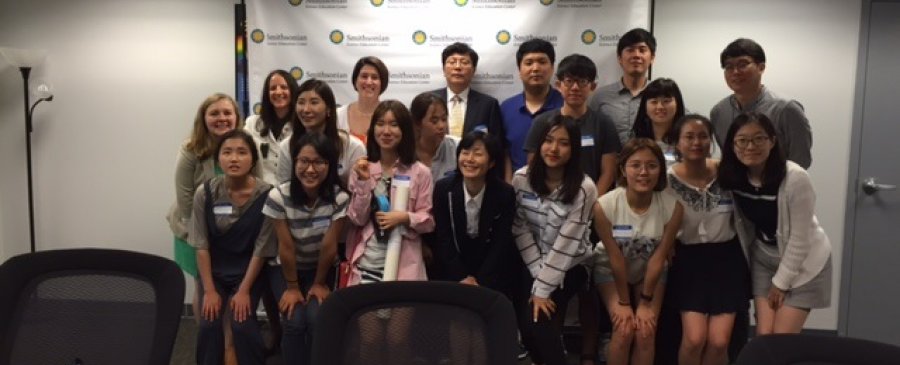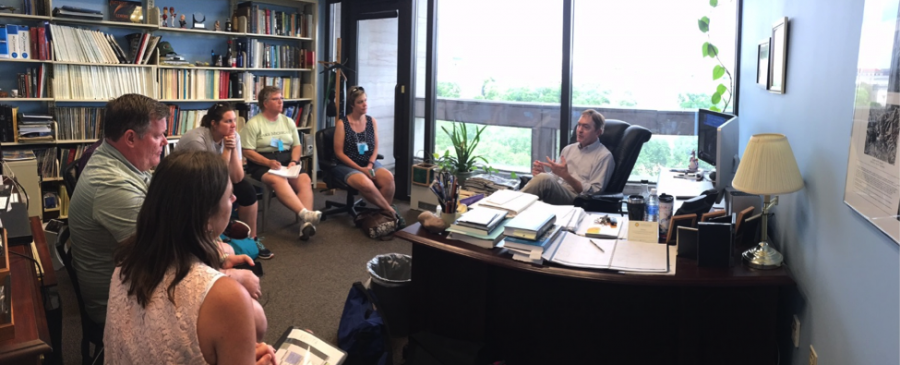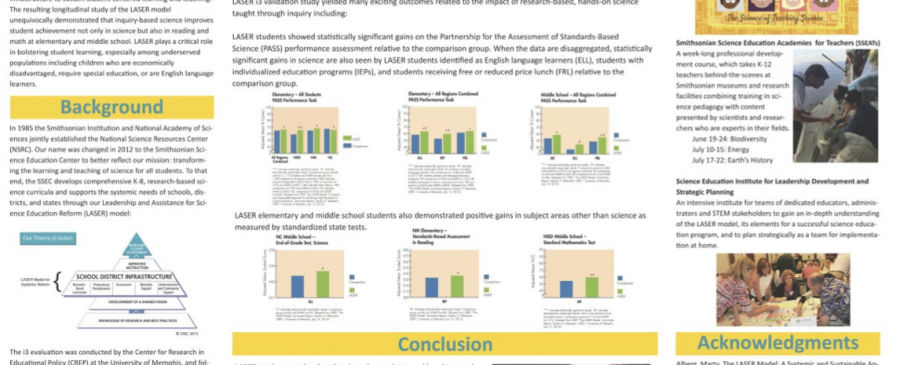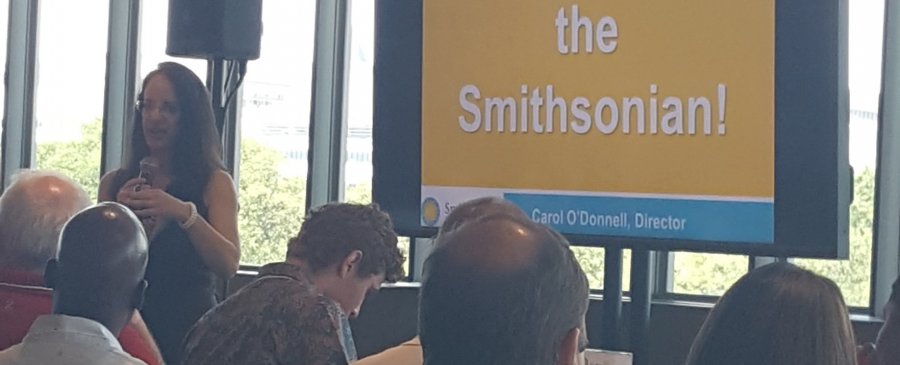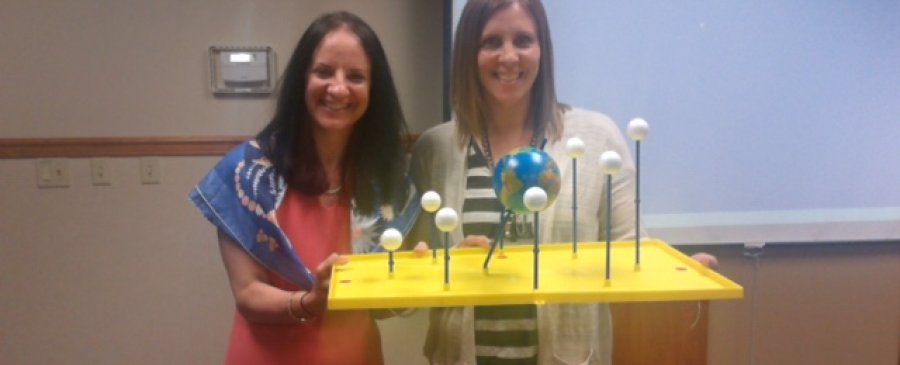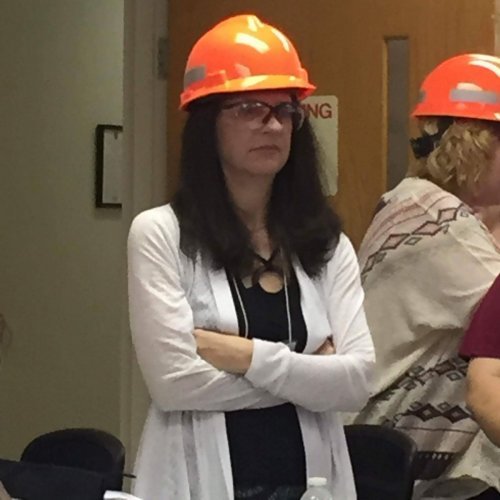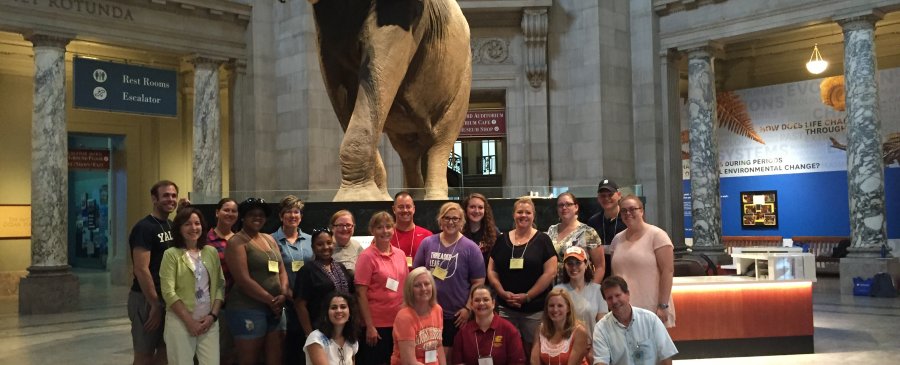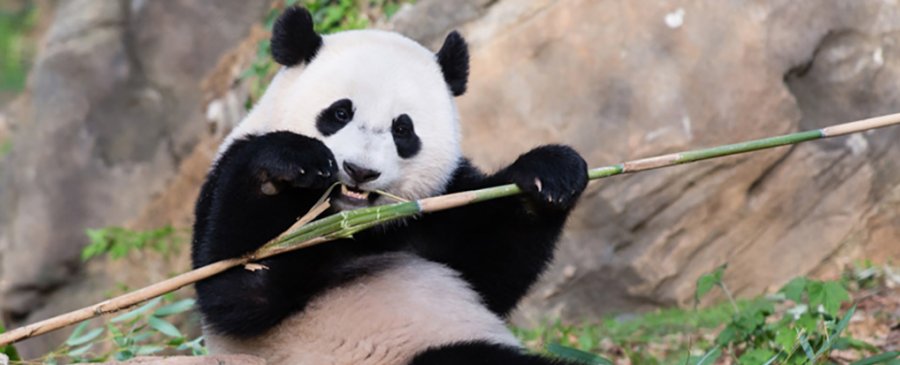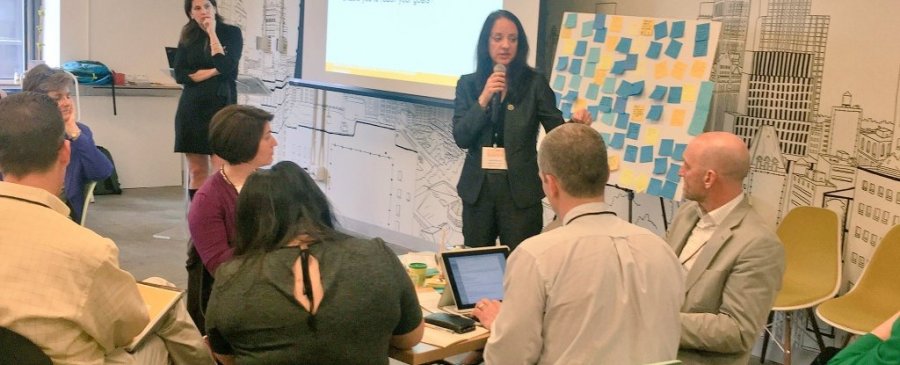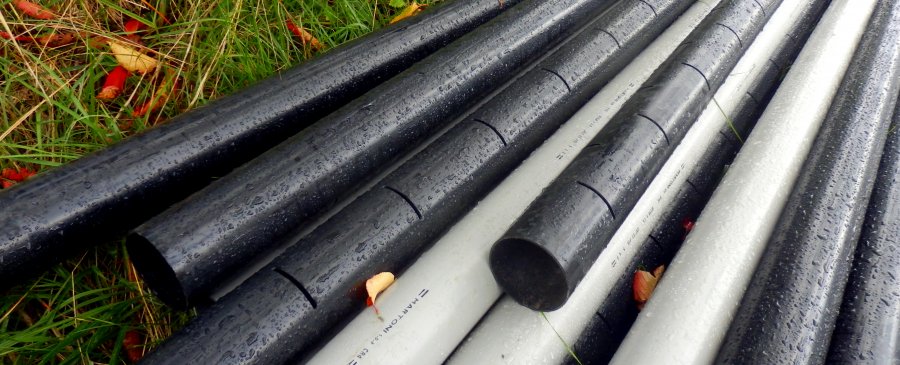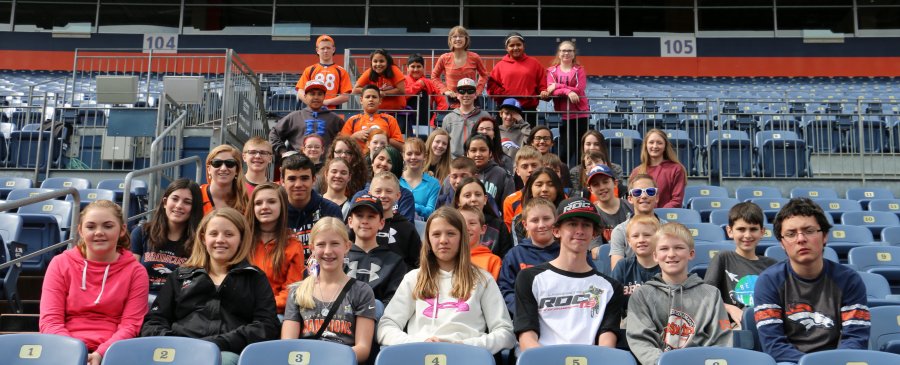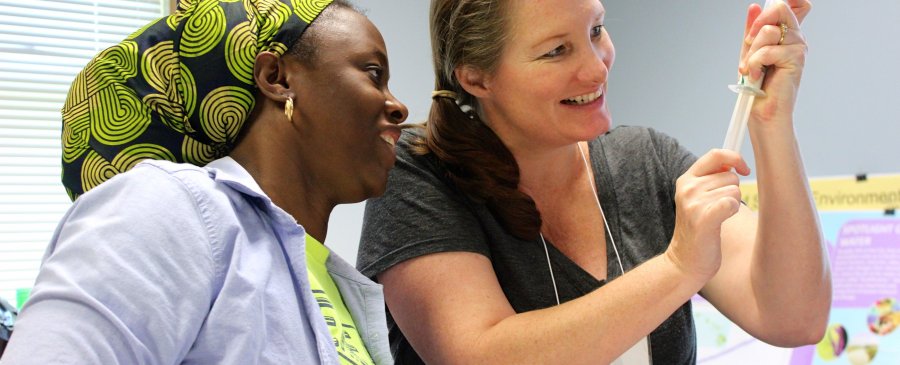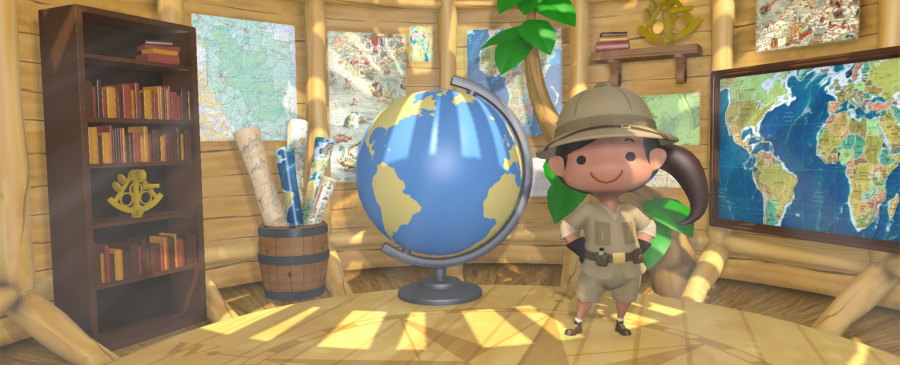We’re sure that you’ve played (and can’t stop playing) our physical science game BumperDucks. In case you haven’t, here’s the gist: in BumperDucks your job is to help a wayward band of ducks reach their final destinations – tasty treats! With the help of collisions and rebounding you can slingshot these ducks to victory. BumperDucks is all about the laws of motion and how we can utilize their effects once we figure out how they work!
What has six legs, a body like an armored tank, and spent all summer in the Curriculum Development offices at the Smithsonian Science Education Center? If you answered roly polys, you would be correct! However, the roly polys weren’t the only new addition to the Smithsonian Science Education Center (SSEC) this summer. I also spent my summer as an intern at the SSEC, and it isn’t one I’m going to forget. My experience at the SSEC was unique. I learned a lot and spent time doing new things.
Summer's over, but birds are still chirping, and the Sun is still shining! Well… sometimes at least. It was a rainy summer here in Washington, DC, but with rain comes prime conditions for one of nature’s greatest shows: rainbows! The majestic, multicolored bows of light that lead to pots of gold and appear after rainstorms as if by magic—except it’s not magic, it’s physics! It might seem intimidating to unravel the secret of rainbows, but it’s actually really simple and so rewarding!
Creative inspiration can be found anywhere—especially in science! Science is an amazing way to spark inspiration and curiosity and this poem by Gavin does just that. Our poet hails from the Greater Chicago Area and, at the age of only 11, has written a beautiful poem inspired by his awe of bioluminescence in nature. We loved Gavin’s poem so much that we wanted to ask him a little more about his process.
At the end of May, astronauts on the International Space Station (ISS) were able to install a new module to the station—by just inflating it! This new addition, known as the BEAM (Bigelow Expandable Activity Module) is the first of its kind when it comes to inflatable habitat technology. Delivered to the station at the beginning of April the BEAM has deflated dimensions of 2.16 meters (7.09 feet) in length and 2.36 meters (7.75 feet) in diameter but has now grown to a whopping 4.15 meters (13.16 feet) in length and 3.2 meters (10.5 feet ) in diameter.
Earlier this summer, 21 teachers from across the country came together in Washington, DC, for this year’s Smithsonian Science Education Academy for Teachers (SSEAT) on Earth’s History and Global Change. The participants spent time behind the scenes at the National Museum of Natural History, the National Air and Space Museum, the Carnegie Institute of Washington, and NOAA Headquarters. Throughout the week, they learned about the origins of the solar system, about our footprint on Earth, and about the Smithsonian.
 Dr. Carol O’Donnell welcoming NC educators to the Smithsonian Image: Sarah Wells/Smithsonian Science Education Center
Dr. Carol O’Donnell welcoming NC educators to the Smithsonian Image: Sarah Wells/Smithsonian Science Education Center
Editor’s Note: The following is a transcript of an interview conducted with Kim Van Eaton. Some answers have been lightly edited for clarity.
Here at the Smithsonian Science Education Center, we’re passionate about science communication and creating an infectious love of science. As part of this mission, our director, Dr. Carol O’Donnell, met with science teachers in Washington State this June to talk about the importance of science education. While there she meet 6th grade teacher Kim Van Eaton from Marie Curie STEM Elementary School. Kim had nothing but kind words to say about STCTM and how the kit had changed her teaching of science! It’s always heartwarming to hear that your work has impacted someone’s life in a positive way. We wanted to know a little more about how Kim has been affected by STC and SSEC, so we got in touch to hear more of her thoughts.
The Smithsonian Science Education Center Helps to Lead Master STEM Teaching Training in Yakima, Washington
Earlier this summer, 19 teachers from across the country gathered in Washington, DC, to learn about biodiversity at this year’s Biodiversity Smithsonian Science Education Academy for Teachers, or SSEAT. The participants received the opportunity to go behind the scenes at the National Museum of Natural History (NMNH), spend time in the Q?rius lab space there, and travel up to Edgewater, MD, to visit the Smithsonian Environmental Research Center (SERC).
Happy Pollinator Week! We can all appreciate the beauty of blooming flowers and budding trees, but we don’t always take a minute to be thankful for their silent helpers. Nine years ago the U.S. senate declared a week each June to be National Pollinator Week. This weeklong event is not only to celebrate the pollinators who make summer beautiful but to raise awareness. Populations of pollinators are in decline, and without these pollinators the fragile ecosystems they live in will fall into disarray.
Director Matthew Brown’s newest film, The Man Who Knew Infinity, opened in April to positive reviews from critics and shed light on the life of a little known mathematician: Srinivasa Ramanujan. Born in Erode, India, in 1887, Ramanujan had a veracious love and instinctual understanding of mathematics. Living poor in South India with no college degree, Ramanujan was able to gain recognition for his inventive theorems and began a correspondence with a Fellow, G.H. Hardy, at Trinity College of the University of Cambridge.
It’s an indisputable fact that as a society, we have fallen head-over-heels for pandas. Whether it be at the National Zoo in Washington, DC, or the Wolong National Nature Reserve in China, these furry giants steal hearts wherever they go, except maybe in their own backyards. Giant pandas are an endangered species, with only 1,600 living in their natural habitats in China’s mountain ranges and 300 in captivity around the world.
On Monday, May 16, 2016 the Smithsonian Institution and the Hebrew University of Jerusalem formally signed a Memorandum of Understanding (MOU) to collaborate on the celebration of the 100th anniversary of Albert Einstein’s General Theory of Relativity. The Smithsonian and Hebrew University will leverage this significant Einstein anniversary to collaborate on projects, produced by the Smithsonian Science Education Center, that employ the resources of the Smithsonian Institution and the Albert Einstein Archives to make science, technology, engineering and mathematic
International Conference on Improving the Learning of Biology
During April 13th through 16th Dr. Carol O’Donnell and the Director of Professional Services Dr. Amy D’Amico attended an International Conference on Improving the Learning of Biology and Other Related Science in the K-12 School Year in Santiago, Chile. The conference focused on inquiry based science education, and Dr. O’Donnell presented the results of the Smithsonian Science Education Center’S 5-year research trial of the LASER model.
100Kin10 New Partners’ Unconference
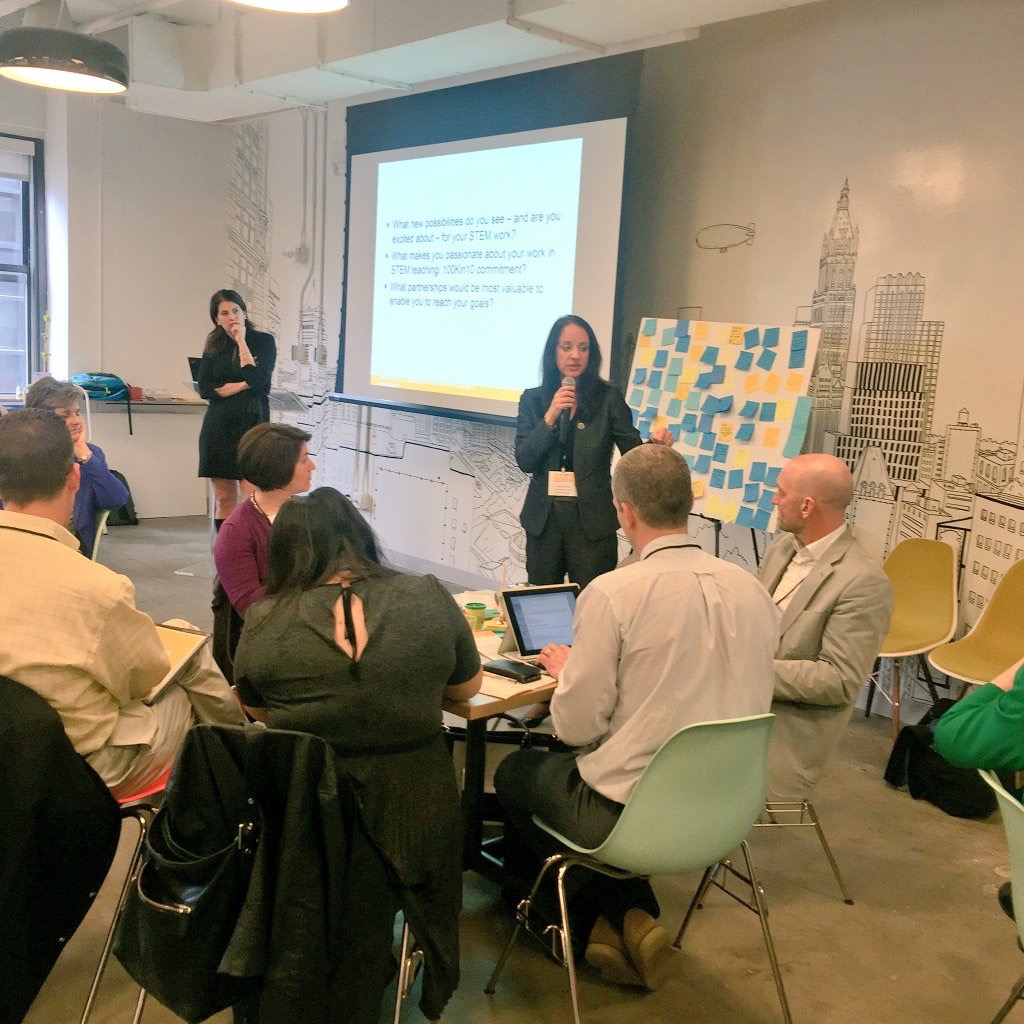 O'Donnell addresses the "unconference" attendees
O'Donnell addresses the "unconference" attendees
It’s the spunky little Pomeranian yipping at shadows from their human’s lap.
 Image: Marjee Chmiel/Smithsonian Science Education Center
Image: Marjee Chmiel/Smithsonian Science Education Center
What do you think of when you hear the word “plastic”? The term has become synonymous with being fake, superficial or cheaply made. Plastic has gotten a bad reputation, but we shouldn’t lose sight of the innovations plastics have brought.
What makes something “plastic”?
 Lindsey Nickerson, science teacher at Eaton Middle School and one of SSEC’s Colorado LASER site coordinators, was selected as the Denver Broncos Tackle STEM Coach of the month for January. This award provided an opportunity of a lifetime: a STEM-based tour of the Broncos’ stadium for her and her students. After nominating Lindsey for this award, I was thrilled to be included as a chaperone on the trip to the stadium.
Lindsey Nickerson, science teacher at Eaton Middle School and one of SSEC’s Colorado LASER site coordinators, was selected as the Denver Broncos Tackle STEM Coach of the month for January. This award provided an opportunity of a lifetime: a STEM-based tour of the Broncos’ stadium for her and her students. After nominating Lindsey for this award, I was thrilled to be included as a chaperone on the trip to the stadium.
“Are we there yet?”
Even people who love road trips will occasionally get bored during a long drive. Cutting down travel time helps to make traveling to different parts of the world easier and more accessible. There is a lot of interest in exploring technologies that can make travel fast and safe. A vehicle known as a maglev train is one type of transportation technology that seems to hold a great deal of promise in that respect.
Take a look at the picture below. You are looking at an underwater forest comprised of giant bladder kelp. Giant bladder kelp. Sounds delicious, right?
OK, maybe not so much, but through some straightforward chemical changes, a molecule found in this and other kelp makes its way to a variety of food, pharmaceuticals, and dental materials you are sure to be familiar with.
Professional services has had a very busy year!
LASER i3
This year brought our Department of Education i3 (Investing In Innovation) grant to a close. While it was sad to say goodbye to such a huge long-term project, we certainly made some lasting memories and increased teaching and learning outcomes for schools in North Carolina, Northern New Mexico, and the Houston Independent School District. We held Implementation Institutes in both Houston and New Mexico that were tailored to the specific needs of the region. Then we brought leaders from all three regions together with individuals and organizations that had been involved in previous LASER programs to collaborate, share ideas, get to know one another, and of course celebrate the incredible investment that the three LASER i3 regions have made in education in their regions over the last five years.
This year was quite the year for the Smithsonian Science Education Center! We celebrated our 30th anniversary, released several digital products, held many professional and leadership development programs, and have been hard at work expanding our curricular offerings! We are excited to see what 2016 will bring! Until then, see what some of our staff have to say about their work in 2015!
For most in the Northern Hemisphere, winter is a time for building snowmen, skiing, and hoping for a snow day. Although many of us are counting down the days until holiday break, there is still time to investigate a few winter science questions! Grab some cocoa and your favorite blanket, and investigate winter from the comfort of somewhere warm.

XiXinXing/iStock/Thinkstock
